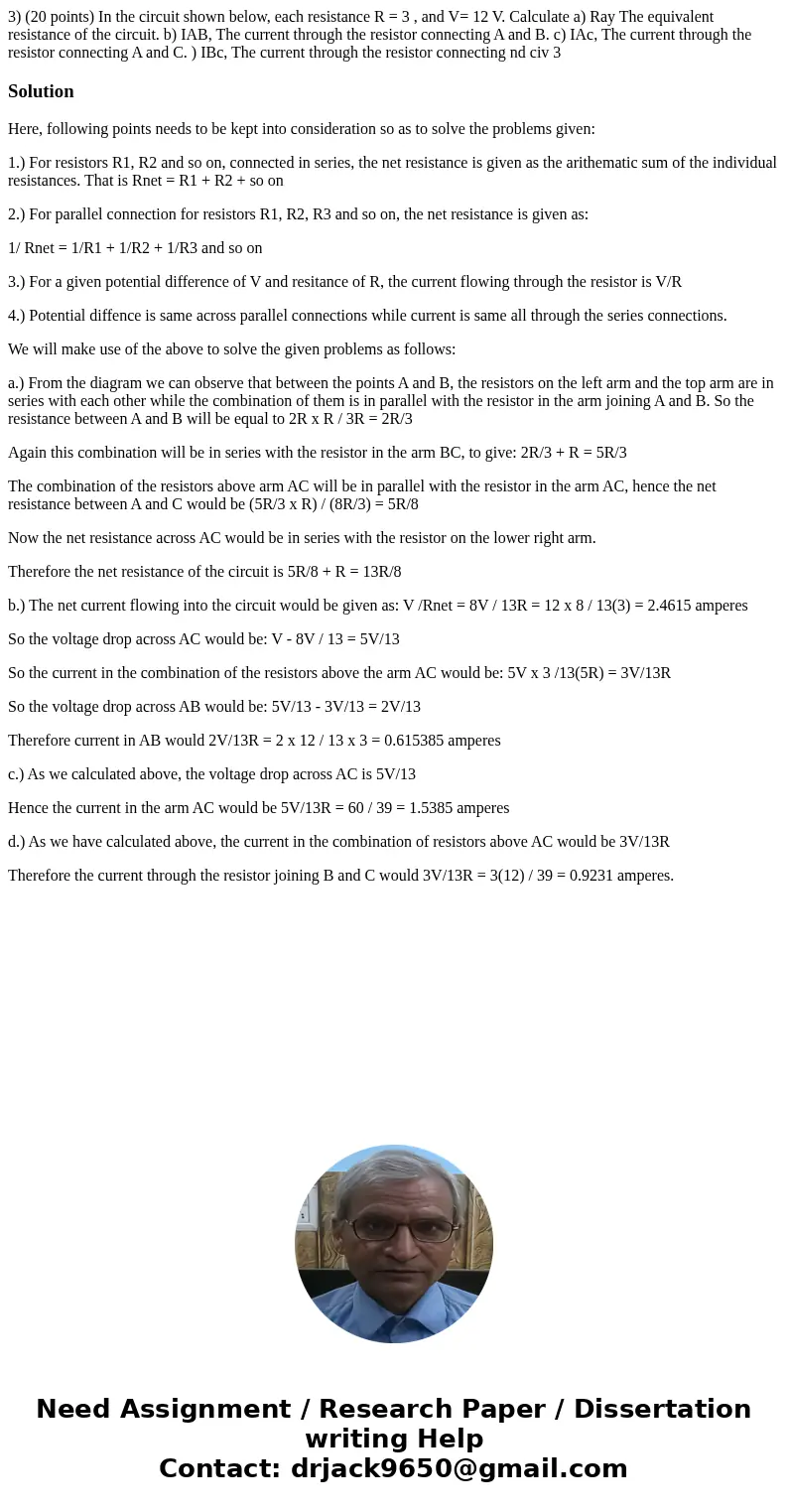3 20 points In the circuit shown below each resistance R 3
Solution
Here, following points needs to be kept into consideration so as to solve the problems given:
1.) For resistors R1, R2 and so on, connected in series, the net resistance is given as the arithematic sum of the individual resistances. That is Rnet = R1 + R2 + so on
2.) For parallel connection for resistors R1, R2, R3 and so on, the net resistance is given as:
1/ Rnet = 1/R1 + 1/R2 + 1/R3 and so on
3.) For a given potential difference of V and resitance of R, the current flowing through the resistor is V/R
4.) Potential diffence is same across parallel connections while current is same all through the series connections.
We will make use of the above to solve the given problems as follows:
a.) From the diagram we can observe that between the points A and B, the resistors on the left arm and the top arm are in series with each other while the combination of them is in parallel with the resistor in the arm joining A and B. So the resistance between A and B will be equal to 2R x R / 3R = 2R/3
Again this combination will be in series with the resistor in the arm BC, to give: 2R/3 + R = 5R/3
The combination of the resistors above arm AC will be in parallel with the resistor in the arm AC, hence the net resistance between A and C would be (5R/3 x R) / (8R/3) = 5R/8
Now the net resistance across AC would be in series with the resistor on the lower right arm.
Therefore the net resistance of the circuit is 5R/8 + R = 13R/8
b.) The net current flowing into the circuit would be given as: V /Rnet = 8V / 13R = 12 x 8 / 13(3) = 2.4615 amperes
So the voltage drop across AC would be: V - 8V / 13 = 5V/13
So the current in the combination of the resistors above the arm AC would be: 5V x 3 /13(5R) = 3V/13R
So the voltage drop across AB would be: 5V/13 - 3V/13 = 2V/13
Therefore current in AB would 2V/13R = 2 x 12 / 13 x 3 = 0.615385 amperes
c.) As we calculated above, the voltage drop across AC is 5V/13
Hence the current in the arm AC would be 5V/13R = 60 / 39 = 1.5385 amperes
d.) As we have calculated above, the current in the combination of resistors above AC would be 3V/13R
Therefore the current through the resistor joining B and C would 3V/13R = 3(12) / 39 = 0.9231 amperes.

 Homework Sourse
Homework Sourse